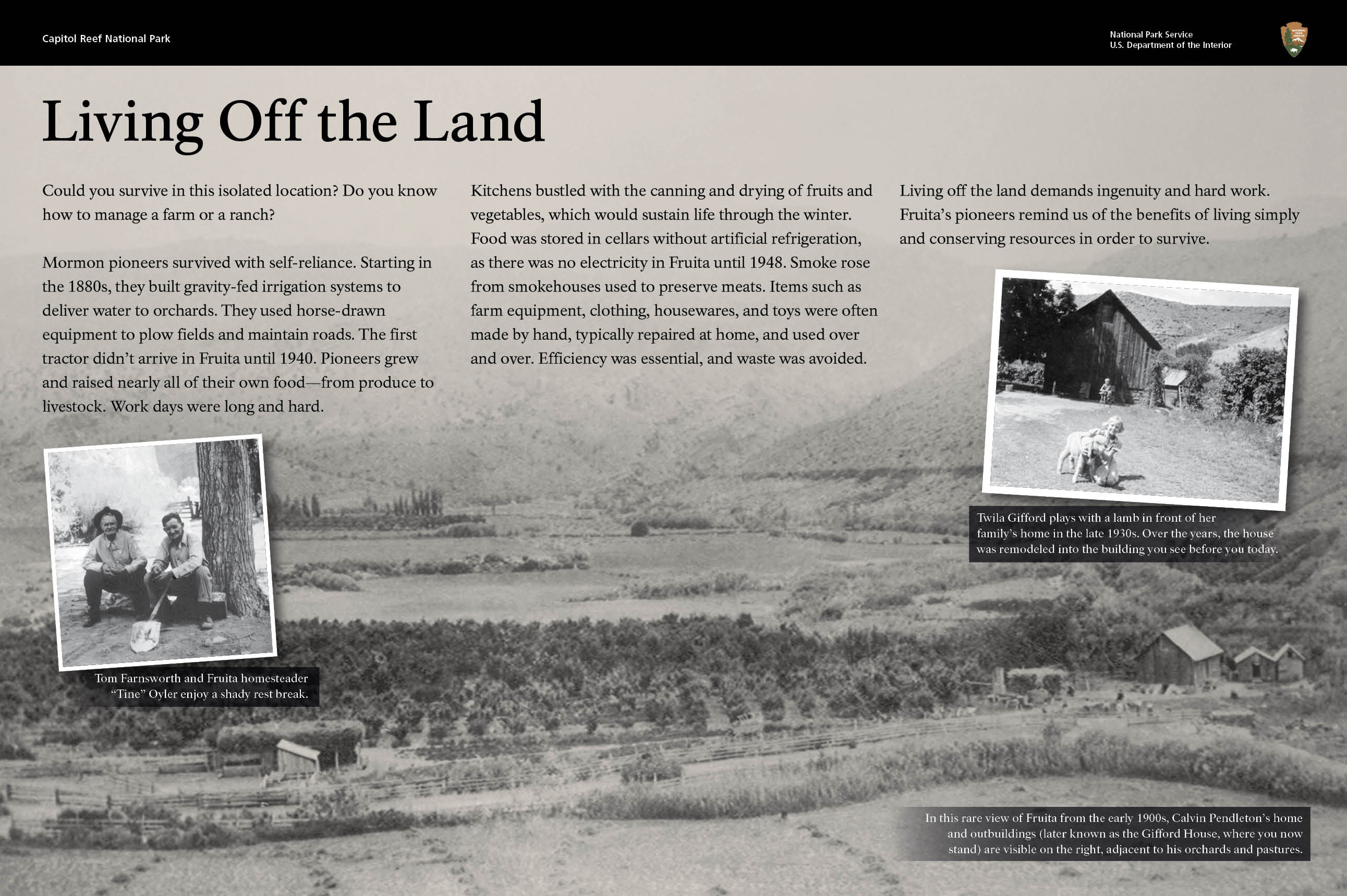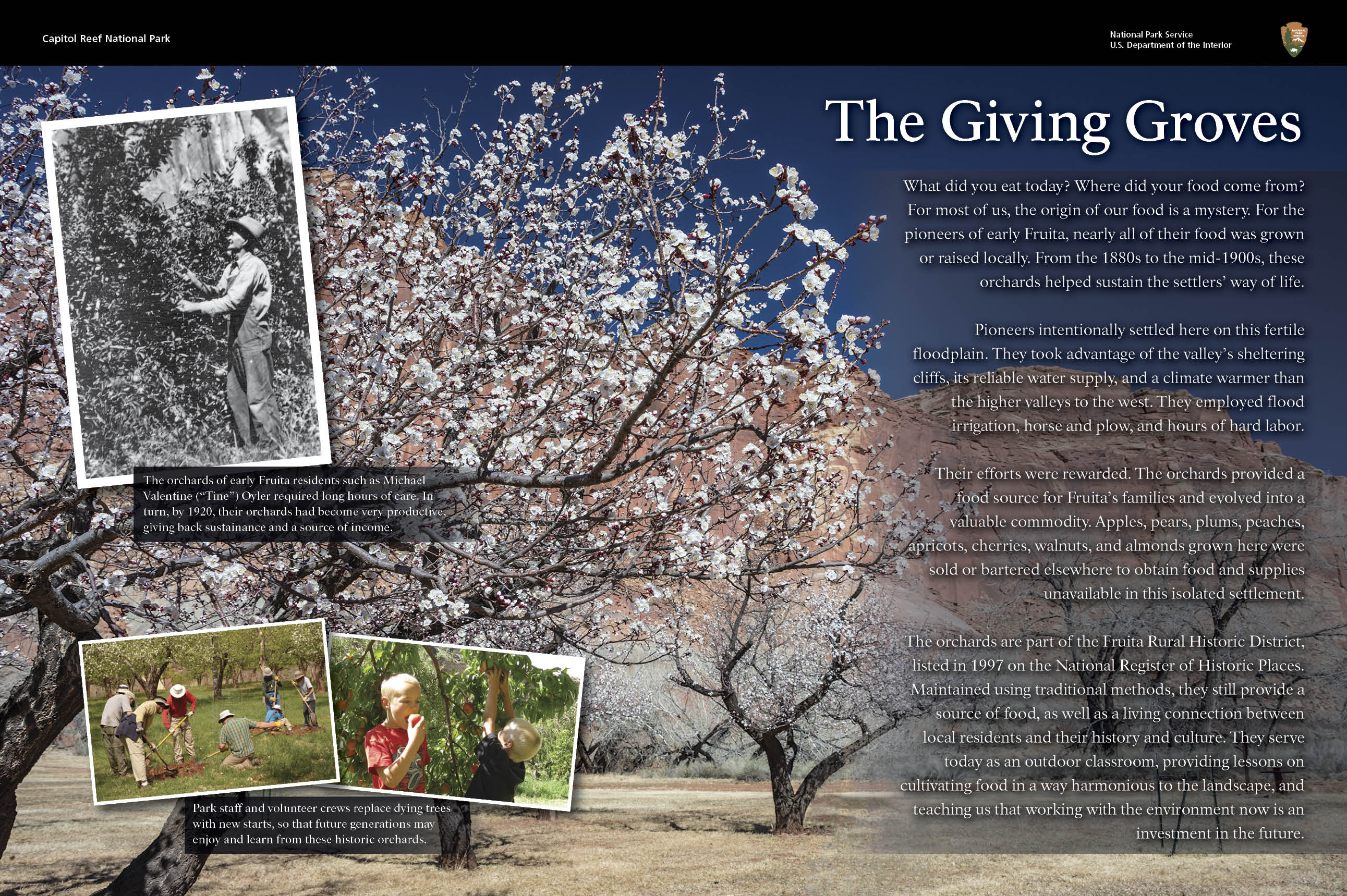Nestled within the breathtaking landscapes of Capitol Reef National Park, the Fruita orchards stand as a testament to the enduring spirit of pioneer ingenuity and sustainable land management. These orchards, often referred to as the “Pioneer Orchard Park,” are not just a collection of trees; they are a living historical landscape that tells the story of early settlers and their deep connection to the land. Utilizing the same gravity-fed ditch irrigation system established by pioneers in the late 1800s and early 1900s, the park continues this legacy, ensuring the orchards thrive today.
A Glimpse into History: The Pioneer Orchards of Fruita
The story of Fruita’s orchards is deeply rooted in the history of Latter-Day Saints pioneers. Recognizing the fertile potential of the Fremont River Valley, these pioneers embarked on an ambitious agricultural endeavor, planting thousands of fruit trees. From the 1880s through the 1960s, these orchards became the lifeblood of the Fruita community, providing essential food and a stable income for families who called this remote area home. The variety was abundant, with apples, apricots, cherries, peaches, pears, and plums flourishing in family-owned orchards, painting a vibrant agrarian picture against the rugged Utah landscape.
 Latter-Day Saints pioneers
Latter-Day Saints pioneers
Today, this remarkable area is preserved as the Fruita Rural Historic Landscape, a designation on the National Register of Historic Places. The orchards, now containing approximately 1,900 trees, are not just a relic of the past but a vital part of the park’s identity and appeal.
Modern Orchard Management: Heritage Techniques for a Sustainable Future
Capitol Reef National Park is committed to maintaining the historic character of these expansive orchards, employing heritage techniques that honor the pioneer methods. The very flood irrigation ditches dug by pioneers in the 1880s are still in use, delivering water to the trees through gravity. While the pioneers faced challenges like floods and droughts, modern park managers grapple with climate change. Warmer temperatures can disrupt the natural bloom cycles, potentially affecting pollination and harvest yields.
 food and income
food and income
Despite these challenges, the National Park Service diligently maintains the orchards throughout the year. This involves cultural irrigation practices, careful pruning, mowing, proactive pest management, and ongoing planting, mapping, and grafting efforts. Preserving the health and productivity of these orchards remains a core objective for Capitol Reef National Park, ensuring Fruita continues to be recognized as the “Eden of Wayne County” for locals and visitors alike.
Orchard Rehabilitation: Replanting for the Next Generation
Recognizing the aging nature of the historic trees and the impact of time, Capitol Reef National Park initiated an orchard rehabilitation project in the historic Fruita orchards. This project, slated to continue until 2025, focuses on essential replanting to sustain the quality and historic essence of the area. Following public input in 2021, the park undertook regrading work in the Guy Smith and Cook orchards to improve soil conditions and enhance irrigation efficiency. In April 2022, park staff and dedicated volunteers planted 260 young peach trees in the Guy Smith orchard, selecting varieties such as early season Red Haven and late season J.H. Hale and Elberta peaches. The rehabilitation continued in 2023 with the planting of 141 cherry trees and 70 apple trees in the Cook orchard. Plans are in place to extend planting to other historic orchards in the coming years.
Many of these orchards were originally planted by Fruita residents from the early 1900s to the 1950s. Up until the 1990s, additional orchards were planted with modern commercial varieties to support a popular “U-pick” program within the park. Today, Fruita stands as a prime example of a preserved historic agrarian landscape, encompassing 100 acres of orchards and verdant pastures.
Addressing Challenges and Ensuring Longevity
Heirloom fruit trees, while historically significant, are often less resilient to drought and disease compared to modern counterparts. Over time, the park orchards have lost nearly 1,000 trees due to age, disease, and less-than-ideal soil conditions. The current rehabilitation project emphasizes proper soil preparation to improve furrow irrigation, soil structure, and nutrient availability. These improvements are crucial for enabling young fruit trees to develop robust root systems, thereby increasing their survival rates and extending their productive lifespan.
This rehabilitation effort is considered a ‘pilot’ project. The knowledge and experience gained during its implementation will be invaluable in guiding future orchard replanting initiatives. This adaptive approach allows park staff to incorporate lessons learned, adjust strategies based on weather patterns, drought conditions, and pest pressures, ensuring the long-term health and historical integrity of Fruita’s cherished “pioneer orchard park.”
